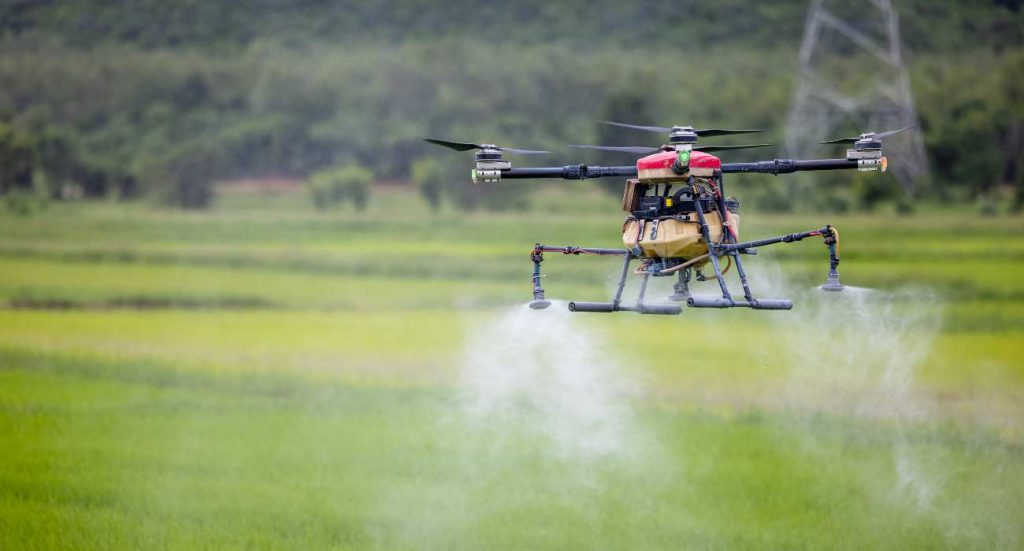
In a quaint village, a farmer’s endless battle against crop-destroying pests paints a vivid picture of an age-old struggle. Despite his relentless efforts using conventional methods, each year yields a disappointing harvest, tarnished by the relentless appetite of unseen adversaries. This scenario is not unique but echoes across fields worldwide highlighting the stark limitations of traditional pest control. Enter Artificial Intelligence (AI), an innovative force poised to revolutionize this uneven battlefield. AI’s introduction into pest management isn’t just an upgrade. It’s a game-changer offering precision, efficiency and sustainability. As we explore this transformative journey, we’ll uncover how AI is not only reshaping our approach to pest control but also promising a healthier, more abundant future for agriculture. Stay tuned for the dawn of AI-driven pest control marks the beginning of an exciting new era in our fight against these age-old foes.
Understanding the Pest Problem
Pests ranging from insects to rodents, wreak havoc across various sectors, notably agriculture, urban environments and public health. In agriculture alone, pests are responsible for up to 40% of global crop losses, significantly impacting food security. Urban areas aren’t spared either. Pests like cockroaches and rats threaten sanitation and can cause property damage, while in public health, mosquitoes are infamous for spreading diseases like malaria and dengue.
The traditional response to these threats? Pesticides. However, their overuse leads to dire consequences. For instance, pesticide runoff contaminates water sources, harming aquatic life. There’s also a growing concern about pesticides contributing to declining bee populations, critical for pollination and biodiversity.
Visually, imagine a graph with a steep curve showcasing the rise in crop losses paralleled by an increasing pesticide usage line. Such imagery vividly illustrates this escalating issue, underscoring the need for smarter and more sustainable solutions in pest control. This backdrop sets the stage for exploring AI’s role in revolutionizing pest management, offering hope for a balanced ecosystem with reduced pesticide dependency.
AI in Pest Monitoring: IoT Sensors and Image Recognition
In the realm of pest control AI is a game changer particularly through IoT sensors and image recognition. Imagine tiny, smart devices scattered across a field. These are IoT sensors, constantly collecting data like temperature, humidity and even plant health. This data paints a vivid picture of the field’s condition, alerting farmers instantly if something’s amiss.
Now enter image recognition. Cameras in these sensors snap pictures of crops. AI like a trained eye, scans these images for signs of pests or diseases. It’s like having a vigilant guard, continuously watching over the crops. When AI spots trouble, like an unusual pattern or color on leaves, it alerts farmers. This early warning system is crucial for nipping pest problems in the bud.
Combining IoT and AI, farmers get a powerful tool. They can monitor vast areas with precision, receive real-time alerts, and take swift action, all without constantly being on the field. This tech not only makes pest control efficient but also environmentally friendly, reducing the need for blanket pesticide use. In essence, AI in pest monitoring is like giving superpowers to farmers in their ongoing battle against pests.

AI for Infestation Detection: Smart Traps and Sensors
Innovative smart traps and sensors, powered by AI, are transforming infestation detection in agriculture and urban pest management. These devices employ sophisticated algorithms to identify specific pest species accurately. Here’s how they operate in the field:
1. Deployment: Smart traps are strategically placed in high-risk areas. They are equipped with sensors and cameras.
2. Detection and Identification: When a pest enters the trap, the camera captures its image. The AI then analyzes this image, comparing it to a database of pest species.
3. Data Analysis: Upon identifying the pest, the system assesses the level of infestation based on the number and frequency of pests captured.
4. Real-Time Alerts: Farmers or pest control professionals receive instant notifications about the type and extent of the infestation, enabling timely intervention.
5. Continuous Monitoring: These traps work round the clock, providing ongoing monitoring and data collection, essential for long-term pest management strategies.
By leveraging AI, these smart traps offer a more precise, efficient approach to pest detection, minimizing the need for widespread pesticide use and supporting more sustainable agricultural practices.
AI in Pest Management Strategies
Alternative Pest Control Methods:
AI-driven innovations are reshaping pest control, especially in the experimental phase. For instance, robotic systems that use AI to identify and eliminate pests are being trialed in agriculture. These robots, equipped with cameras and sensors, patrol fields, pinpointing pests and either removing them or applying minimal, targeted pesticides. This approach dramatically reduces the overall use of chemicals.
Integrated Pest Management (IPM):
A significant case study of AI integration in IPM is seen in Californian vineyards. Here, AI-powered drones equipped with advanced imaging technology survey vast areas, detecting early signs of pest infestation. These drones analyze plant health at a granular level, enabling farmers to implement precise, localized treatments. This method has not only improved pest control efficiency but also decreased pesticide use by up to 30%, showcasing a sustainable path forward in pest management.
Environmental Benefits and Reduction of Harmful Pesticides
The adoption of AI in pest control marks a significant leap towards environmental conservation. By integrating AI technologies, the precision in targeting pests is drastically improved, leading to a substantial reduction in pesticide use. This precision directly translates into fewer chemicals released into the environment, benefiting both the ecosystem and human health.
An infographic highlighting this impact could vividly illustrate the change. Imagine a ‘before’ scenario: fields drenched in pesticides, affecting not just pests but also beneficial insects, soil quality, and nearby water sources. In the ‘after’ scenario, AI-driven methods pinpoint pest-infested areas, using minimal and more effective pesticides. This targeted approach spares non-target species, preserves soil health, and prevents water contamination.
Additionally, AI’s role in promoting non-chemical pest control methods further lessens environmental harm. These methods include mechanical traps and biological controls, which are more sustainable and less intrusive than chemical pesticides. The overall result? A healthier ecosystem, improved biodiversity, and safer food production – a win for the planet and its inhabitants.
Challenges and Future Prospects
Ethical and Regulatory Considerations
The integration of AI in pest control opens a Pandora’s box of ethical and regulatory challenges. Experts voice concerns over data privacy, as AI systems often require extensive data collection. There’s a growing debate around the potential misuse of such data. Additionally, regulatory frameworks are still playing catch-up with these rapid technological advances. The need for stringent guidelines on AI usage in pest management is more pressing than ever, ensuring safety without stifling innovation.
Future Developments and Innovations
Looking ahead, the horizon of AI in pest control brims with potential. AI-driven drones are a particularly exciting prospect. Imagine drones patrolling agricultural fields, equipped with advanced sensors to detect pest activity in real-time. This could enable targeted interventions, drastically reducing pesticide use. Another thrilling development is autonomous pest control robots. These bots could navigate crops, dispensing natural predators of pests, like ladybugs, in affected areas. Such innovations promise not only to revolutionize pest control but also to make it more eco-friendly.
These advancements, while promising, must navigate the complex web of ethical and regulatory concerns. Balancing innovation with responsibility will be key in this journey towards a more sustainable and AI-integrated future in pest management.
Final Thoughts
In wrapping up, we revisit our opening narrative: the age-old struggle against pests and the limitations of traditional methods. Now, armed with AI’s prowess, we stand on the brink of a transformative era in pest management. This journey through AI’s role in revolutionizing pest control not only highlights its potential but also underscores our responsibility towards sustainable practices. As we look ahead, let’s ponder. How will we harness AI to not only protect our crops but also preserve our planet? The future of pest control is not just about technological advancement; it’s about making choices that safeguard our environment for generations to come. Let’s embrace this AI-led revolution with both optimism and caution, steering towards a future where balance and sustainability reign supreme.

